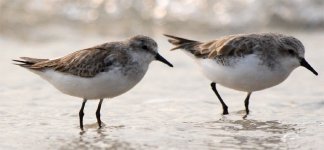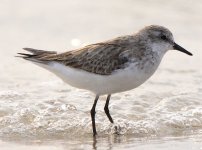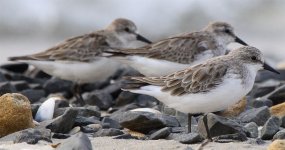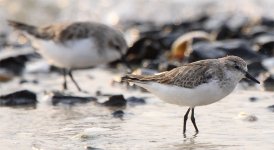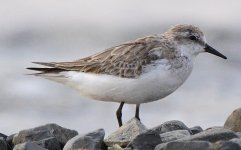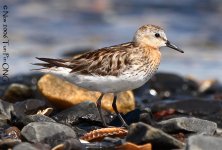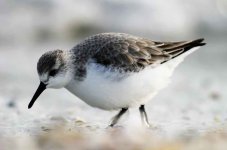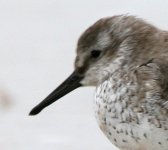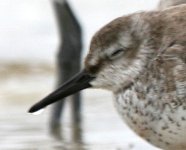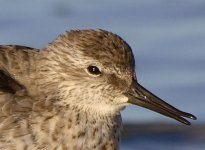tunpin.ong
Registered User
Hi,
This is probably one of the most difficult ID features when in non-breeding plumage. In Australia as well as along East Asian - Australasian flyway, all black-legged small stint in non-breeding plumage can be assumed to be Red-necked. However, there should be a small number of Little Stints among them but it is almost impossible to tell them apart, unless in breeding plumage.
Friday 1 Dec afternoon, I photographed a small number of Red-necked Stints. Among them, one individual in particular showed smaller head and longer tibia. It was fairly easy to pick it up among 10+ Red-necked Stints.
I am attaching some photos with suspected stint and ordinary Red-necked Stint together, trying to compare leg length, bill shape, primary wing projection, etc.
Appreciate on your comments.
Note:
Pic1723 - the suspected stint in the middle and the Red-necked Stint in front.
Regards,
This is probably one of the most difficult ID features when in non-breeding plumage. In Australia as well as along East Asian - Australasian flyway, all black-legged small stint in non-breeding plumage can be assumed to be Red-necked. However, there should be a small number of Little Stints among them but it is almost impossible to tell them apart, unless in breeding plumage.
Friday 1 Dec afternoon, I photographed a small number of Red-necked Stints. Among them, one individual in particular showed smaller head and longer tibia. It was fairly easy to pick it up among 10+ Red-necked Stints.
I am attaching some photos with suspected stint and ordinary Red-necked Stint together, trying to compare leg length, bill shape, primary wing projection, etc.
Appreciate on your comments.
Note:
Pic1723 - the suspected stint in the middle and the Red-necked Stint in front.
Regards,





